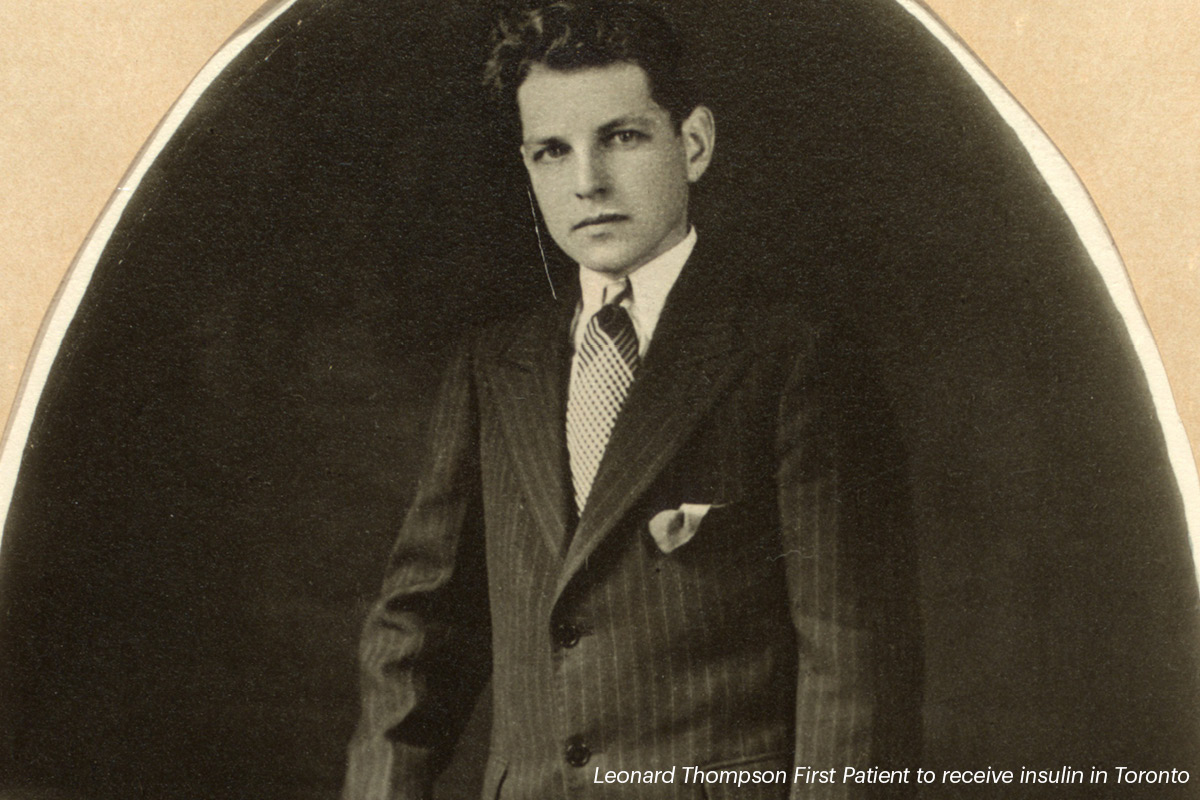
100 years of development and the future
Fourteen-year-old Leonard Thompson was gravely ill, slipping in and out of a coma at Toronto General Hospital. He’d been diagnosed with diabetes three years earlier, and despite receiving the best treatment available, his condition had steadily worsened. Doctors offered a risky proposition: A promising but experimental drug they’d been developing but hadn’t yet used in people.
The year was 1922. One of the doctors was Sir Frederick Grant Banting, and the drug was insulin.
That day in 1922—January 11—Leonard became the first person to receive insulin. But instead of lowering his blood sugar, it caused an allergic reaction that sent Leonard’s doctors back to the lab, where they worked around the clock to improve the formulation. On January 23, they returned to Leonard’s bed with a new syringe: Insulin 2.0. With this version, Leonard’s symptoms began to disappear and he regained his health.
Insulin was a breakthrough in diabetes care, and it set the stage for innovation that would continue throughout the next century. Animal-derived extracts would give way to biosynthetic human insulins. Insulin concentration and delivery tools would be standardized to ensure accurate dosing. Pumps, pens, inhalers, as well as automated insulin delivery (e.g., artificial pancreas) systems, would be developed to customize insulin administration.
But we have not yet reached the pinnacle of insulin innovation.
Clinical Trials
Leonard Thompson received an experimental drug that wasn’t yet tested in humans. In modern times, we’d say that he was in a clinical trial—a research study of a drug, device, or method of treatment involving human volunteers that has not been approved by regulatory authorities (for example, the U.S. Food and Drug Administration) for that specific indication. Carefully conducted clinical trials are the safest and fastest way to find treatments that work—like the insulin that Leonard Thompson received.
Many people, however, are not aware of the various opportunities to participate in clinical trials. Here are some facts that might help:
Lots of Clinical Trials to Choose From: There are more than 300 clinical trials for people with T1D, including diabetic complications—eye disease, kidney disease, and nerve disease.
Trials Need Participants, Like You: About 20,000 people are needed for T1D trials in the U.S., but more than 80 percent of clinical trials are delayed or fail because doctors cannot find enough participants.
Breakthrough T1D Clinical Trials Connection: Breakthrough T1D has an easy-to-use tool to find a clinical trial that might be right for you, the online Clinical Trials Connection. It asks users some simple questions—your city, distance you’re willing to travel, and other characteristics—before matching you with trials for which you might be eligible.
Interested in a Clinical Trial? Breakthrough T1D has a new director of clinical trial education, Anastasia Albanese-O’Neill, Ph.D., APRN, CDCES, and a new group of volunteers, Clinical Trial Education Volunteers, to raise awareness of and promote enrollment in type 1 diabetes clinical trials. If you are interested in a clinical trial, and don’t know where to start, email aaoneill@BreakthroughT1D.org, and we’ll set you up with a Clinical Trial Education Volunteer in your area. He or she will go over what clinical trials are currently underway, share information about who can participate, and answer any questions you may have.
Have You Participated in a Clinical Trial? Share Your Story!: Breakthrough T1D wants to hear from you! Email social@BreakthroughT1D.org to find out how!